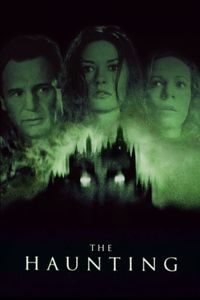The Conjuring (2013)
(On Cable TV, September 2014) There’s something to be said for a well-executed horror film even when it doesn’t try to reinvent the genre or leave the viewers with permanent trauma. So it is that The Conjuring harkens back to simpler times, when ordinary people were imperilled by supernatural horrors and extraordinary people could come to help them out. Here, the Perron family (two adults, five daughters) finds itself threatened by demonic forces shortly after moving into a dilapidated farmhouse in 1971. Financially desperate and concerned by increasing signs of evil, they call upon paranormal investigators to investigate and hopefully solve the case with minimal loss of life. It’s as basic a premise for a horror film as can be, but there’s a lot to be said for director James Wan’s approach to the material and the quality of the script: from the first few moments, The Conjuring is carefully controlled, beguiling in the way it sets up its characters, creepy in showing us the setting and well-accomplished in its visuals. We’re never comfortable, especially when the characters are so sympathetic. (Lili Taylor has a substantial role as the matriarch while Ron Livingstone plays dutiful husband, but it’s Patrick Wilson and Vera Farmiga who are most compelling as the Warrens, carefully inhabiting roles halfway between credible people and unflappable demon-hunters.) Like an un-ironic old-school classic, The Conjuring carefully ramps up its creepiness into chills into scares into full-blown horror… and remarkably enough without showing much gore, nudity or profanity. There’s nothing really new here (nor is there much in terms of thematic depth), but in horror even more than in other genres, execution is key and this film nails down the fundamentals. It works even better as an antidote for routine horror movies that fail to even provide the basic scares. Even the comforting finale is exactly what the film (and the characters) needed. Throw The Conjuring in with films such as Sinister and its prototype Insidious, and you’ve got a good argument for an ongoing revival of good American mainstream horror.

